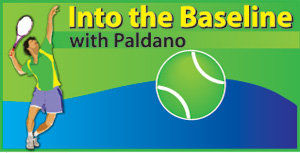Face masked Grand Slams
Two Grand Slam tennis events that went ahead in the midst of the global health hazard, are the US Open and the French Open of 2020. Both nations had primary and subsequent waves of the virus. Events were worked out in conditions with almost nothing conducive to players and the organisers, the precautions were irksome.
Personality to win
None of the players reached their comfort zone in either of the Grand Slams. The last men’s Grand Slam winner, that is winning all four Grand Slam events in one calendar year, was Rod Laver of Australia 51 years ago. His observation, a player must adapt to win on a bad day went to the extreme in these events. It is true even for the best of the exponent of the game, the playing form of a player is never a constant, it peaks and wanes in cycles, present conditions have an add-on effect to this.
Prevailing conditions permit the worst training possibilities, hazardous travelling and worst match play arrangements. Game-wise players resorted to safe tactics. Winners edged the opponent with personality than ability.
French Open
TV was the only possibility to watch the event in real time. October is autumn in Paris, wet and cold, players wore uncomfortable body suits. French Open is a month of May event, playing in October players had to cope. The stadium temperature was 13C to 14C, cold.
To win on a bad day is personality dependent than skill dependent. This is not emphasised enough in player development of today even among the top professionals. Caroline Garcia of France won the third round match having lost the first set playing almost like a beginner. It can happen, if internally stressed. She is French from Lyon and the country is in bad shape.
Clay court tennis
The French Open is played on burnt clay. The surface loses its firmness when dry and has to be watered to regain it. Often courts are watered after every set. With the ball-bounce, a shot will lose a good deal of the speed and the spins have extreme effect. It calls for extreme adaptations in stroke making and tactics. Strangely to my astonishment many played at net effectively.
Some of the biggest names of the past, such as Boris Becker, John McEnroe, Jimmy Connors, Stefan Edberg, Pete Sampras in men and Venus Williams, Kim Clijsters and Martina Hingis appeared in Paris for many years but never won the title. Most successful were Bjorn Borg of Sweden and Rafael Nadal of Spain in Men and among women Steffi Graf of Germany.
Possible winners in Paris this year, in men are Djokovic, Nadal and Thiem. Outside favourites are Tisitsipas of Greece, Argentina’s Diego Swartzman and Russian Rublev. Zverev lost showing fever symptoms. The Roland Garros gates remained closed, less than a thousand were allowed in for a day with safety seating arrangements. Outside the gates it was not safe.
Fabulous Iga Swiatek
In women’s field, top seed Halep was surprised with the venomous play of the Polish teenager Iga Swiatek. Halep lost 6/1, 6/2 in 68 minutes. Last year Halep beat her 6/0, 6/1, in the same situation; this is tennis. Swiatek’s ground strokes had 125 to 140 kmph speed. Excess of 25kmph over Halep. Tall Swiatek covered court well and had the ability to play at net equally well. She is a fluent stroke maker even in the current situation. Another of the Serena William version in tennis. All eyes are on her now.
Speed, ground gaining trend
While placement places the opponent in restricted situations in shot selection, it is speed that robs the time to make an effective shot. Sampras, Nadal, Federer, and Wawrinka in men and Serena Williams, Halep, Osaka thrived have the emphasis of speed in their strokes with matching court coverage speed. Throughout history this has been the winning formula. Tactically tight rope walks, without a safety net. It is an extremely difficult ability to acquire and challenging to execute. If the drop shot could be mastered along with speed using touch or spin, a foxy trap could be set to win.
 Top spins and under spins gives more control but slows down the ball giving advantage to the opponent, flat trajectory shots keep the speed.
Top spins and under spins gives more control but slows down the ball giving advantage to the opponent, flat trajectory shots keep the speed.
If clay, a surface known to be slow requires speed of over 100kmph to win, what is the hard court speed now? Players better take note of this and not spend all the time on court. The challenge now is in the physical ability. Players’ height has an advantage but then Diego Swartzman is not tall and so is Simona Halep.
The other method to decrease the time availability to opponent is the design of Sampras, Federer, Djokovic and Serena Williams formula of playing from well inside the base line. To which having quick sighting eyes fluent shot selection and fast feet are the main need.
Nadal gets his speed from muscle power playing from way back behind the base line. It works for him, he is a well-built Spanish Toro, unique and with marvellous ability. In the recent past history there was another like him. Ivan Lendl of the Czech Republic.
New names
2020 a year best forgotten. New faces appeared, Sofia Kennin, Naomi Osaka, Danielle Collins, Fiona Ferro and new to fame Iga Swiatek. As for events, they will be remembered courageous or insane and as face-masked Grand Slams.
—George Paldano, Accredited Coach of German Tennis Federation; National coach Brunei, Sri Lanka & Davis-Cup, Federation-Cup coach. —————– geodano2015@gmail.com


